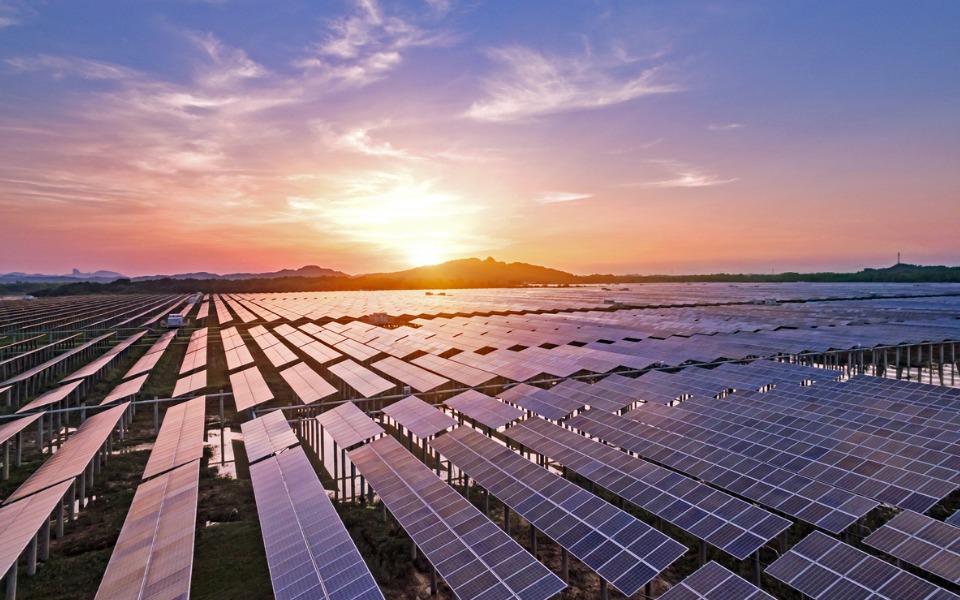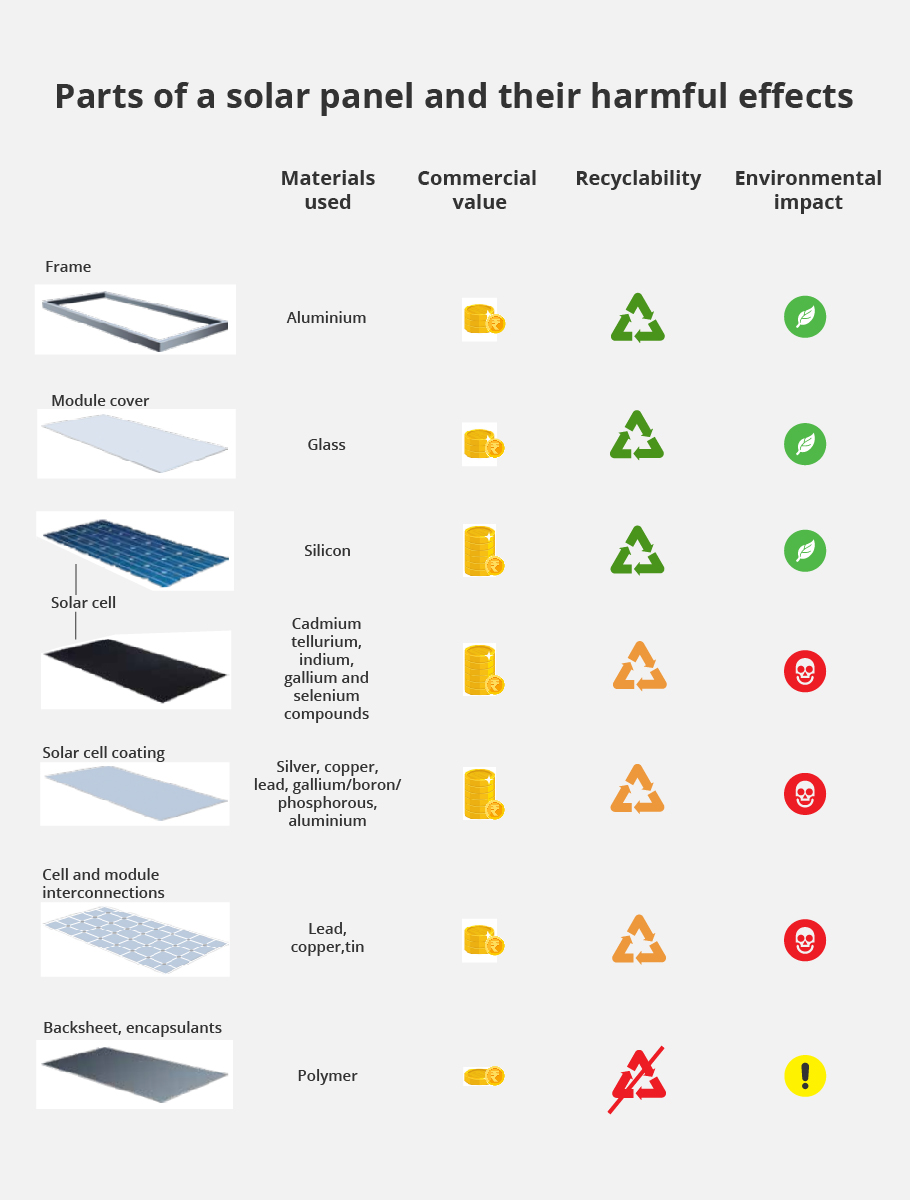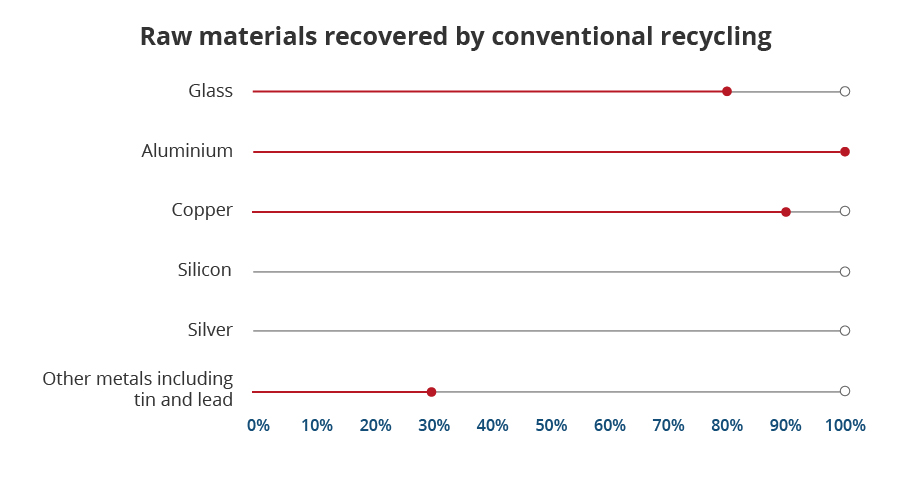
Solar energy is clean, but it can become cleaner
Sunlight is looked upon as the cleanest source of energy, which can be easily harvested. So much so that Prime Minister Narendra Modi went to the extent of saying at the recently held World Solar Technology Summit that India can exceed its renewable energy (mainly solar and wind) targets, going beyond 175 GW to reach 220 GW capacity by 2022. The Prime Minister’s optimism is guided by the spurt in solar energy capacity built up over the years, which has given hope that we may finally wean away from coal-based energy – responsible for most of the world’s CO2 emissions.

Sunlight is looked upon as the cleanest source of energy, which can be easily harvested. So much so that Prime Minister Narendra Modi went to the extent of saying at the recently held World Solar Technology Summit that India can exceed its renewable energy (mainly solar and wind) targets, going beyond 175 GW to reach 220 GW capacity by 2022. The Prime Minister’s optimism is guided by the spurt in solar energy capacity built up over the years, which has given hope that we may finally wean away from coal-based energy – responsible for most of the world’s CO2 emissions.
But as we proceed on our solar sojourn, we need to understand how clean and green solar energy really is. Or to put it this way: Can this energy become cleaner than what it appears right now?
Harvesting solar energy sounds promising for the sheer abundance of raw material (sunlight) and consistently falling prices of PV (photovoltaic) panels, commonly known as solar panels. But little attention is paid to end-of-life management of these panels. Simply put, what happens to the PV panels once they become useless at the end of 20-25 years of their service? Do we dump them into already overflowing landfills? Or just incinerate them and assume they vanish into thin air?
Case study
The Solar Energy Corporation of India recently invited bids for setting up a 100 MW solar project in Rajnandgaon, Chhattisgarh. The ambitious project is to come up on waste land (barren). It is encouraging to know that a power-surplus state like Chhattisgarh, which meets 94% of its electricity requirement from coal energy, is moving towards a supposedly green energy source. But the devil lies in the detail.
The Environmental and Social Due Diligence Report (ESDDR) of the Rajnandgaon project puts the proposed ground mounted plant in the ‘low impact’ category. The report read: “The project components have limited environment and social impacts, which can be mitigated with the adoption of suitable mitigation measures.” It is termed ‘low impact’ because of the benefits it gives in the form solar-powered electricity and employment as against ‘temporary displacement and compaction of top soil’, which too does not matter much in this case because it is not an agriculture or forest land. However, sadly the ESDDR makes no mention of how to dispose of the solar PV panels after the project is decommissioned, say after 25 years.
Also read: In climate change fight, here’s how India can exceed Paris accord targets
In fact, most countries and their solar industries are unwilling to envisage the long-term consequences of how to dispose of or recycle these panels, which are made of valuable, precious, critical, and toxic materials.

The U.S. Environmental Protection Agency (EPA) predicts that India could produce 7.5 million tons of solar waste by 2050. Of course, the US (10 million tons), China (20 million tons) and Japan (8 million tons) are ahead of us while Germany with 3 million tons of estimated solar junk is in a better position with policies in place for end-of-life management of PV modules.
Will it not be pertinent to conduct a life cycle assessment (LCA) of a solar panel and its material (glass, aluminium, silica, silver, lead, copper, tin etc) and add the cost of extraction and eco-friendly disposal to the per unit cost of electricity generated?
The government takes pride in saying that it has brought down the solar power tariff to Rs 2 or Rs 3 per kWh. Nobody says cheap power is bad, but is cheap also clean?
“No law makes it mandatory for the producer of the panel or the project developer to address eco-friendly disposal or reuse of the material. By not doing so we are not encouraging environment-friendly R&D,” says Samrat Sengupta, programme director for Climate Change and Renewable Energy at Centre for Science and Environment, New Delhi.
Once the government brings in the regulation, research will happen and commercially viable solutions will be ready in no time, adds Sengupta.
India is a sufficiently big market, which has the power to implement regulations. “We are not China so we don’t have to put trade barriers,” adds Sengupta.
Also read: Gujarat shows the way in solar rooftop power generation
Recycling solar waste
Conventional recycling of PV modules recovers 70-80% of the raw materials. Most countries, including India, classify PV waste as e-waste (We know how badly India is struggling to take care of its e-waste).
Mechanical processes can separate aluminium, copper, glass and silicon. However, the glass fraction remains contaminated with bits of silicon, polymers and metals. Besides, the low-quality glass is unfit to be used in manufacturing of new modules. Purification of glass is expensive and hazardous. Incineration of polymer fraction leads to harmful greenhouse gas emissions while the use of specialized incinerators is likely to increase the total cost of recycling by 10-15%.

The amount of silver used is being cut down consistently to reduce cost, which makes the solar panels less attractive for recycling. Thus, we are increasing the risk of most solar material becoming so cheap over the years that its recyclable value would keep falling. For example, a rag-picker finds value in collecting PET or a bottle of mineral water, but not the thin plastic wrapper of a popular chips brand. It’s plain economics.
Even as the solar movement gathers steam, for a country like India it will be important to look ahead and identify the most recyle-friendly technologies so that 25 years down the line we don’t end up putting the onus on one another for taking care of the refuse. Just like the way it happened with plastic.
Recycling is also important because metals and rare earth materials like lead, lithium, cobalt, cadmium (used in batteries to store solar energy) are extracted by mining, which has its own impact on the environment.
Technological advancements in recycling are happening, but in the absence of strict government regulations the world over, compliance remains lackadaisical. Studies prove that up to 90% of the solar waste is recoverable, but in the rush to go green not much attention is paid to upcycling or recycling.
Priyadarshini Karve, a physicist and energy expert, is concerned about the direction India’s solar journey has taken so far. “We definitely need energy, but how much is enough? Firstly, we need to rationalize our energy usage without depriving anyone of his/her right. Say, for example, developing road infrastructure of the standard that public transport becomes more cost efficient. This will save a lot of energy. Even at a personal level, there is a lot that we can do to reduce our power consumption.”
About the challenge of solar waste, Karve says, “Solutions are emerging. We know how to handle the electronic components in a solar panel. Glass, metal and silicon can be recycled or reused. Recycling technologies will be refined over a period of time for synthesizing rare earth materials like lead and other toxic material. I don’t think it is possible to calculate the cost of disposing solar panels right now because we are in transition. The best a government can do is to make it mandatory for solar EPC developers to take back the panels, which reach the end of life.”
Food security & decentralization of power generation
A latest research published in the scientific journal, ‘Sustainability’, shows that India would need approximately 55,000 to 125,000 sq.km., or land roughly the size of Himachal Pradesh or Chhattisgarh, to meet its renewable energy targets.
The research paper titled: ‘Renewable Energy and Land Use in India: A Vision to Facilitate Sustainable Development’, suggests developing energy on lands degraded by human activities (27% of India’s total land) rather than placing new infrastructure within natural habitats or areas of high production agriculture. This would reduce cumulative impacts and minimize land use conflicts.
Today, India boasts of being food surplus, but it is no secret that our agricultural landholding is shrinking due to rapid urbanization. An estimate pegs India’s population growth at 20% over the next 40 years, which essentially means we cannot fritter away the country’s precious farm land for meeting our never-ending want for energy.
“To erect a ground mounted solar system on a farm, you do not have to go through an extensive process of land use change. Simply intimate the revenue department, no approval required. So here we are, becoming energy secured at the cost of agricultural land and not even addressing the issue of how the land will be reused,” says Sengupta.
There is a fundamental fault in the way the world is implementing renewable energy (solar and wind) projects. “We have an existing generation system where electricity is produced on MW scale and then transmitted far and wide through distribution lines. We are forcefully trying to fit solar in the same system which was suitable for coal,” said Karve, who is opposed to centralization of power generation systems.
Sun’s light is everywhere so why do governments want to centralize its production by raising a megawatt system? Why not produce solar energy where it is required?
Decentralisation has to be the approach. Rooftop solar units (40 GW capacity build up target set for 2022) against ground mounting (60GW capacity target) can solve problems that come with centralization of power generation and also reduce pressure on our farm lands. “We are under-utilizing rooftops of buildings all around our cities. If every house of a city is fitted with a solar rooftop then that city’s power requirement will come down drastically. We need a transformative change in all three areas — generation, supply and use. Only then can use really move towards a renewable energy based future,” concludes Karve.
The next big technological revolution is expected in battery storage. In the excitement of discovering a new energy source, we ignored the environmental ills of coal during the industrial revolution, and we are repeating the mistakes with solar. Let’s think long term in the race to extend battery lives.

